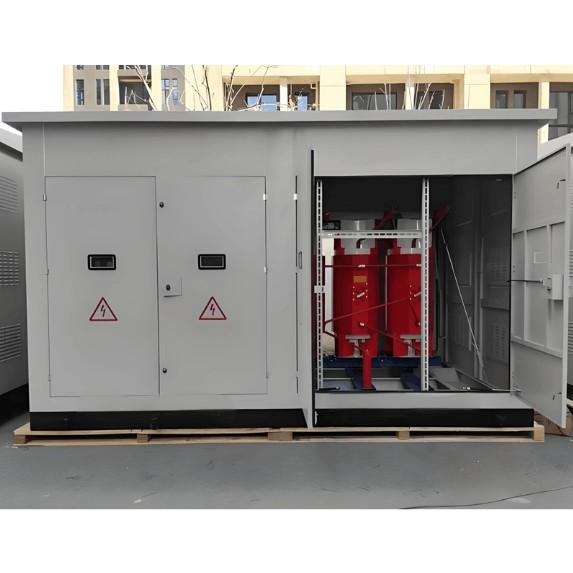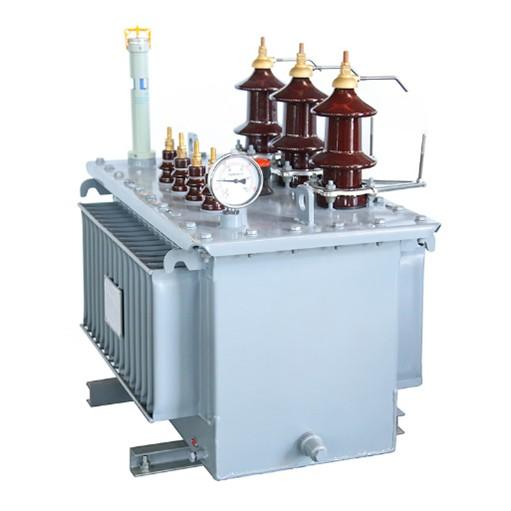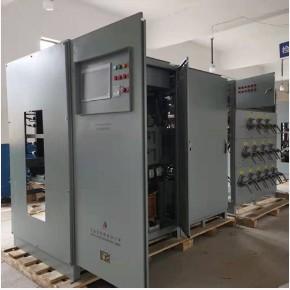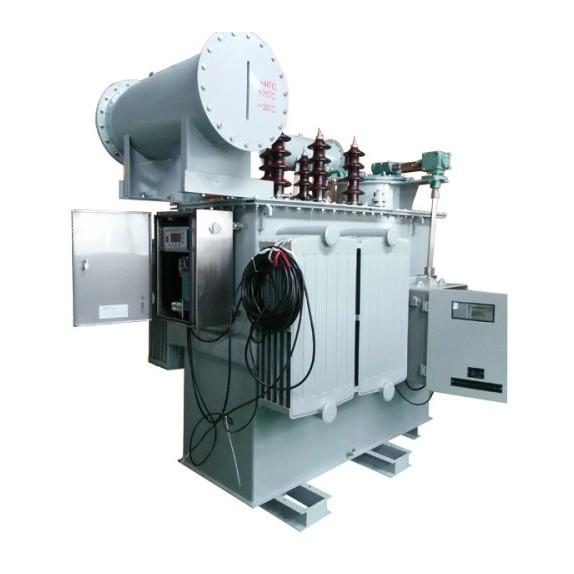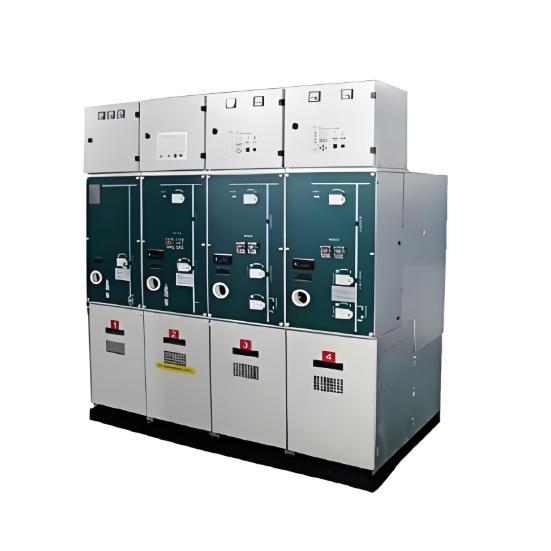
Pasabay sa patuloy nga pag-unlad sa ekonomiya ug ang pagdako sa impluwensya sa kuryente sa kinabuhi sa mga tawo, lalo na sa mga urban nga lugar uban sa mataas nga load density, ang reliabilidad sa power supply mahimong dako nga importante. Ang pagbuhat og distribution network batasan sa ring main structure makapadaghan sa maayo ang reliabilidad sa power supply, sigurado ang continuity sa supply, ug minimisahan ang epekto sa pagkawasay sa mga equipment sa distribution ug maintenance outages. Isip usa ka key device sa ring main operation mode, ang Ring Main Unit (RMU) gigamit nang masagana sa mga distribution substations ug compact substations sa mga load centers sama sa urban residential quarters, high-rise buildings, large public structures, ug industrial plants tungod sa iyang mga advantage sama sa simple nga structure, compact size, murang cost, ug abilidad sa pag-improve sa mga parameters, performance, ug safety sa power supply.
1. Mga Tipo sa Ring Main Units
Sa mga distribution systems, ang mga equipment nga makapahimulos sa ring main functions kasagaran maglakip sa ring main type cable branch boxes ug RMUs. Ang ring main type cable branch boxes mas mura ug naghatag og mas flexible nga installation locations. Mas advantageous sila sa mga built-up urban areas diin ang pagkuha og space para sa distribution room (na gikinahanglan alang sa RMUs) mahimong dili madali, nagpakita sa ilang flexibility. Apan, kon ikompara sa RMUs, ang pinaka disadvantage sa ring main branch boxes mao ang dili maayo nga safety performance (espesyalmente sa mga pamaagi labi na sa misoperation), dili maayo nga operating environments, ug certain risks. Kon ang kondisyon makapahimulos, ang author nagrekomenda nga prioritahan ang paggamit sa RMUs alang sa ring main configurations. Ang RMUs makaklasipika ngadto sa daghan nga tipo batasan sa klase sa load switch nga gigamit: air-blast RMUs, piston-type RMUs, vacuum RMUs, ug SF6 RMUs. Sa tanang ini, ang air-blast ug piston-type RMUs gi-phase out na tungod sa fatal flaws ug dili maayo nga reliability sa ilang load switches. Ang vacuum RMUs ug SF6 RMUs gigamit nang masagana sa mga distribution systems tungod sa ilang high performance, reliable operation, ug maintenance.
1.1 Vacuum Ring Main Units
Ang mga tuig sa domestic production ug paggamit sa vacuum circuit breakers ug vacuum switchgear naghatag og matangkob nga teknolohiya sa vacuum sa China. Ang domestically developed vacuum RMUs nagpakita og mataas nga performance sa type tests apan wala pa gitubo ang ilang gamit. Ang primary reason mao ang underperformance sa operating mechanism. Ang design sa operating mechanisms para sa vacuum switches mas komplikado, ug tungod sa kalidad sa domestic raw materials, processing technology, ug quality control, ang kalidad sa operating mechanisms nga giproduktso sa domestic manufacturers wala pa gisatisfy. Ang operation ug maintenance mas difficult, ug unsaon pag-measure sa vacuum degree sa vacuum RMUs usa ka major challenge sa maintenance.
1.2 Advantages ug Disadvantages sa SF6 Ring Main Units
Ang application sa SF6 RMUs sa mga distribution systems dominado sa imported products. Sila wide welcome sa mga power supply departments tungod sa ilang excellent performance, reliable operation, fully insulated sealed design, ug maintenance-free advantages. Ang typical SF6 RMUs maglakip sa Schneider's RM6, ABB's SafeRing, ug Siemens' 8DJ20. Apan, mayroon usab sila'y mga shortcomings sa panahon sa operation.
1.2.1 Advantages sa SF6 RMUs:
(1) High Performance Specifications: Ang SF6 RMUs adunay mataas nga operating frequency, makapaghimo ug pagbukas sa rated active loads hangtod sa 100 times. Adunay usay sila'y good breaking capacity ug makapahimulos sa high currents.
(2) Convenient Maintenance: Ang cabinet surface design user-friendly. Clear wiring diagram prompts sa panel naghatag og guidance sa operation. Ang uban nga mga produkto even note precautions sa cabinet surface, further reducing the incidence of operator error. Ang most RMU products equipped with devices nga makapahimulos sa live status sa main circuit, providing indication of the live condition, ug kon combined sa electromagnetic locks, preventing the handle door from being closed when live, reducing misoperations. Additional, a transparent acrylic observation window sa front door allows direct viewing of the switch's open/close status, which is very convenient.
(3) Strong Flexibility: Ang modern RMUs makapahimulos sa flexible nga meet the requirements sa various distribution network designs ug makapahimulos sa arbitrary combination according to actual situations. Furthermore, ang cable connection methods also very flexible, allowing for adaptable connections even on uneven ground surfaces without causing partial discharges.
1.2.2 Disadvantages sa SF6 RMUs:
(1) Inflexible Configuration: Mahimo ra sila mogamit sa limited number of schemes provided by the manufacturer, making it difficult to meet various user-specific needs.
(2) Inability to Expand: After the switchgear is commissioned, expansion is generally not possible.
(3) Requirement for Specialized Accessories: Gikinahanglan sila og specialized accessories like specific cable terminations, which can be costly.
(4) Stringent Installation Requirements: Kon ang installation requirements wala mapasabot, ang units may not achieve their intended performance.
Tungod sa inflexible configuration sa fully sealed SF6 RMUs, ang usage sa expandable semi-sealed SF6 RMUs sa mga distribution networks nahimong mas dako. Ang semi-sealed RMUs adunay independent gas compartments para sa bawat unit, making them easy to expand, install, ug replace. Currently, widely used RMUs include Schneider's SM6, ABB's Uniswitch, ug Siemens' 8DH10. Tungod kay ang domestic manufacturers gradual master sa SF6 load switch technology, ang quantity ug quality sa domestically produced SF6 RMUs steadily improving. Apan, currently, ang market sa domestic 10kV ug 20kV SF6 RMUs still primarily dominated sa foreign companies (like Schneider or ABB).
2. Issues sa SF6 Ring Main Units
2.1 Moisture Content sa SF6 Gas
Ang SF6 RMUs seldom come with moisture content test reports. As the equipment operator, ang power supply companies often cannot measure the moisture content themselves. Ang moisture level sa SF6 gas directly affects its arc-extinguishing performance ug safe operating performance sa equipment. Para sa SF6 RMUs nga operational na sa matag tuig, assessing the state of their arc-extinguishing capability is a challenge.
2.2 SF6 Gas Leakage Issues
Ang SF6 RMUs may have sealing issues leading to gas leaks. Practical experience shows that although imported equipment generally has good sealing performance, leakage incidents still occur. Since most units lack gas monitoring devices, users may be unaware of leaks, potentially creating hidden dangers. This is particularly concerning regarding the performance (insulation, switching, etc.) of the RMU at zero gauge pressure and its ability to withstand internal arc faults. Many of these products use manual operating mechanisms, and operators work in close proximity. An accident could have serious consequences. Currently, including a pressure indicator has become a mandatory requirement, included as a necessary accessory for semi-sealed RMUs.
2.3 Mechanism Issues
In distribution transformer protection, combination units using load switches plus fuses are common. The load switch interrupts load current, and the fuse interrupts short-circuit and overload currents. In Hebei's distribution network, incidents occurred with fully sealed RMUs where the fuse blew, but the load switch failed to open reliably, preventing the faulty transformer from being de-energized and causing severe damage. The cause was an excessive travel in the trip wire of the operating mechanism controlled for tripping, which prevented the impact force from the fuse striker pin from successfully activating the load switch's tripping mechanism. This defect can be resolved by adjusting the trip wire and the tightness of the nuts. Additionally, simulating the fuse operation for transformer feeder units has been included as a mandatory pre-commissioning test.
2.4 Material Issue of the Equalizing Shield
Semi-sealed RMUs typically cannot use touchable cable terminations. Equalizing shields are often used to address insufficient phase-to-phase distance at the cable termination connection points. However, aluminum equalizing shields are highly susceptible to damp environments. Even when used with anti-condensation heaters, their effectiveness in humid conditions is limited. In 20kV distribution systems, severe corrosion of these shields has been observed. Surface roughness and white powdery corrosion products disrupt the electric field uniformity on the shield surface, negating the equalizing effect. Due to the small phase-to-phase distances around the shields, combined with daily temperature variations, condensation forms at the bottom of the gas compartment and can flow back to the shield area, creating a discharge path. The epoxy material of the insulating barriers at the bottom of the gas compartment can suffer severe electrical corrosion, eventually leading to interphase discharge paths and ultimately surface insulation breakdown. This entire discharge process is gradual. To address condensation, power supply companies can modify the RMU's equalizing shield, switching to silicone rubber insulating cable end covers. These covers internally use a semiconductor layer, which can still provide an equalizing effect. The improved RMU design has passed condensation and withstand voltage tests and is slated for trial operation in the distribution network.
3. Recommendations for SF6 RMU Selection
(1) Choose expandable RMUs: Their flexible configuration, easy installation, and ease of expansion represent the future direction for SF6 RMU use.
(2) Consider maintenance: Ideally, the SF6 load switch should be equipped with a device to monitor SF6 pressure. Otherwise, it should have passed a zero-gauge pressure switching test.
(3) Consider climate and location: Select products that have passed condensation tests. For small ring main units, like terminal units, where future expansion is not considered, using fully sealed RMUs can significantly reduce the impact of condensation on the equipment.
Summary
Years of operational practice show that among various RMU types, SF6 RMUs offer high performance, reliability, compact size, low space requirements, and minimal maintenance, leading to their widest application. Considering various factors such as maintenance costs, secondary investments, and reliability, it is recommended, where conditions allow, to prioritize the use of SF6 RMUs in distribution network renovation and construction projects. During planning and construction, sufficient consideration should be given to incorporating automation devices and adopting safe, reliable, and advanced equipment to enhance distribution levels, making the distribution network more reliable and secure.











